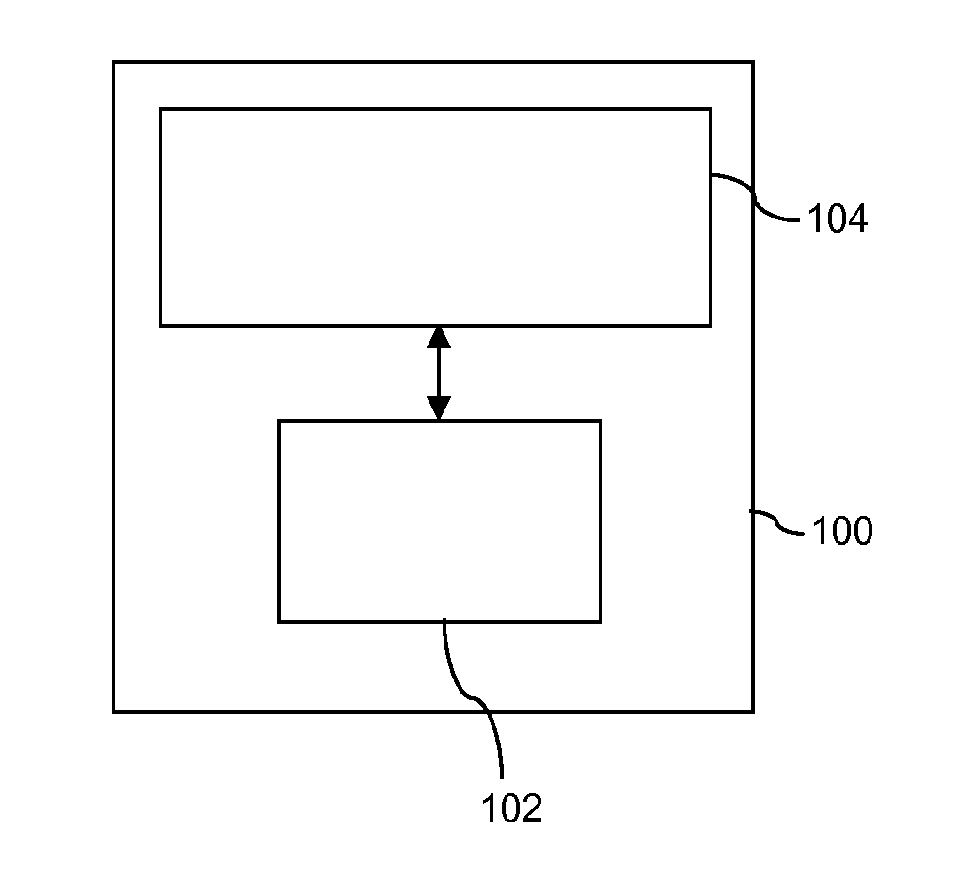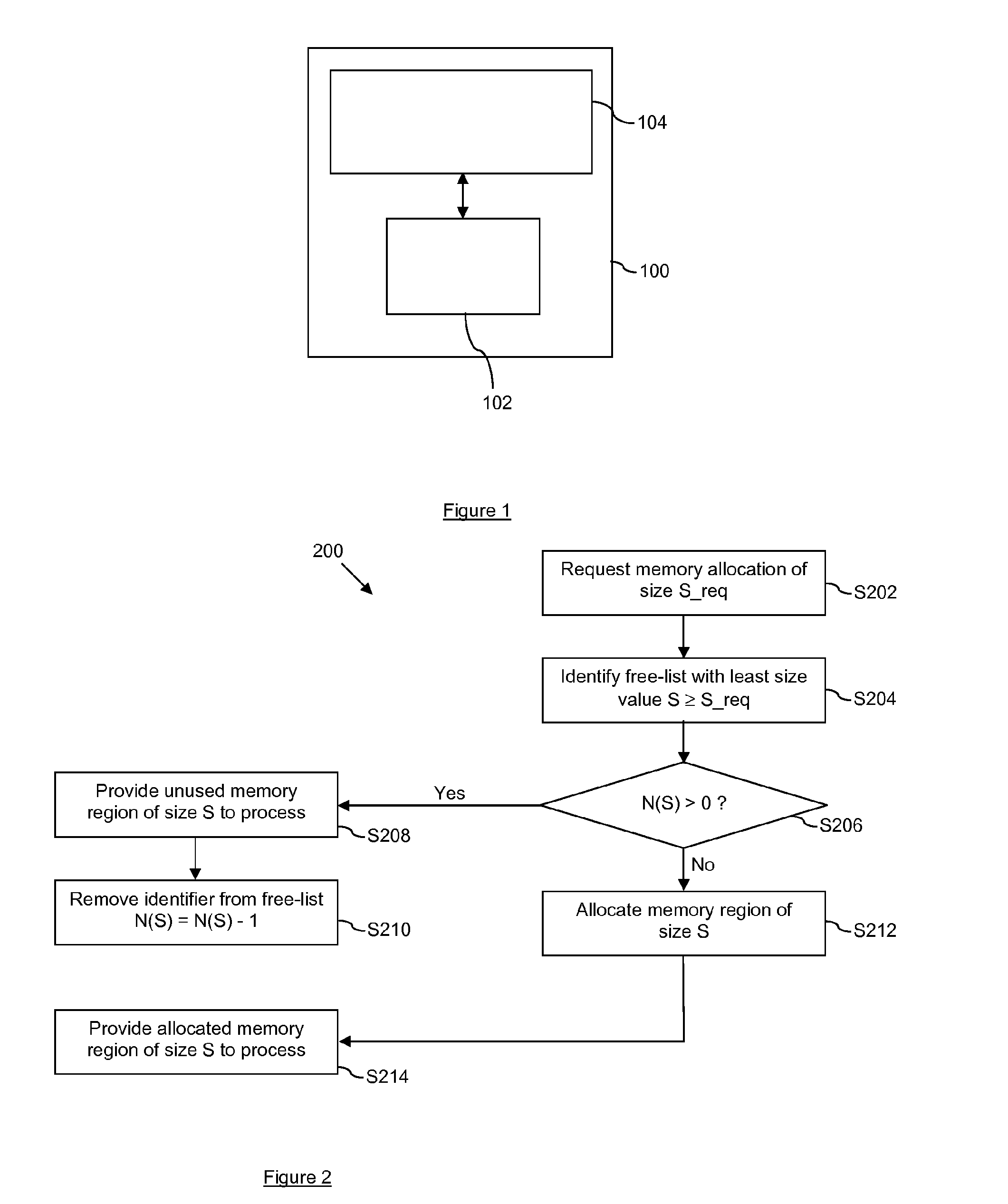Memory management
a memory management and memory technology, applied in the field of methods, can solve the problems of inefficient memory usage, high usage of memory 104/b>, and it is relatively difficult to identify a suitable memory region in response to a dynamic memory allocation
- Summary
- Abstract
- Description
- Claims
- Application Information
AI Technical Summary
Problems solved by technology
Method used
Image
Examples
Embodiment Construction
[0056]In the description that follows and in the figures, certain embodiments of the invention are described. However, it will be appreciated that the invention is not limited to the embodiments that are described and that some embodiments may not include all of the features that are described below. It will be evident, however, that various modifications and changes may be made herein without departing from the broader scope of the invention as set forth in the appended claims.
[0057]Embodiments of the invention make use of free-lists, which have been described above. However, in contrast to the use of free-lists as described above, in embodiments of the invention, the processor 102 of the computer system 100 may adjust the thresholds associated with the free-lists being used, i.e. the thresholds need not be predetermined. This adjustment is based primarily on the current usage of the memory 104 by the one or more processes that are being executed.
[0058]This will be described in mor...
PUM
 Login to View More
Login to View More Abstract
Description
Claims
Application Information
 Login to View More
Login to View More - R&D
- Intellectual Property
- Life Sciences
- Materials
- Tech Scout
- Unparalleled Data Quality
- Higher Quality Content
- 60% Fewer Hallucinations
Browse by: Latest US Patents, China's latest patents, Technical Efficacy Thesaurus, Application Domain, Technology Topic, Popular Technical Reports.
© 2025 PatSnap. All rights reserved.Legal|Privacy policy|Modern Slavery Act Transparency Statement|Sitemap|About US| Contact US: help@patsnap.com



